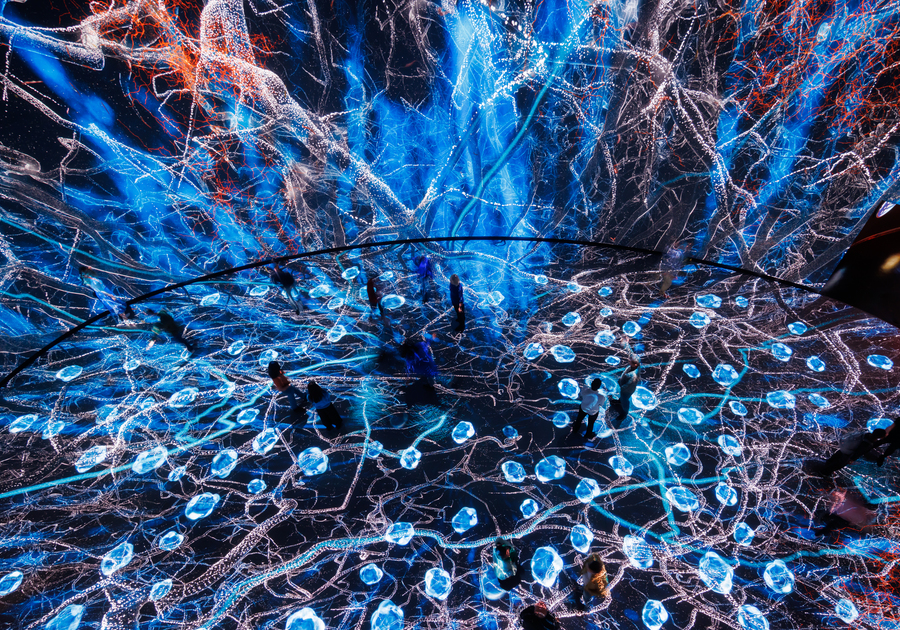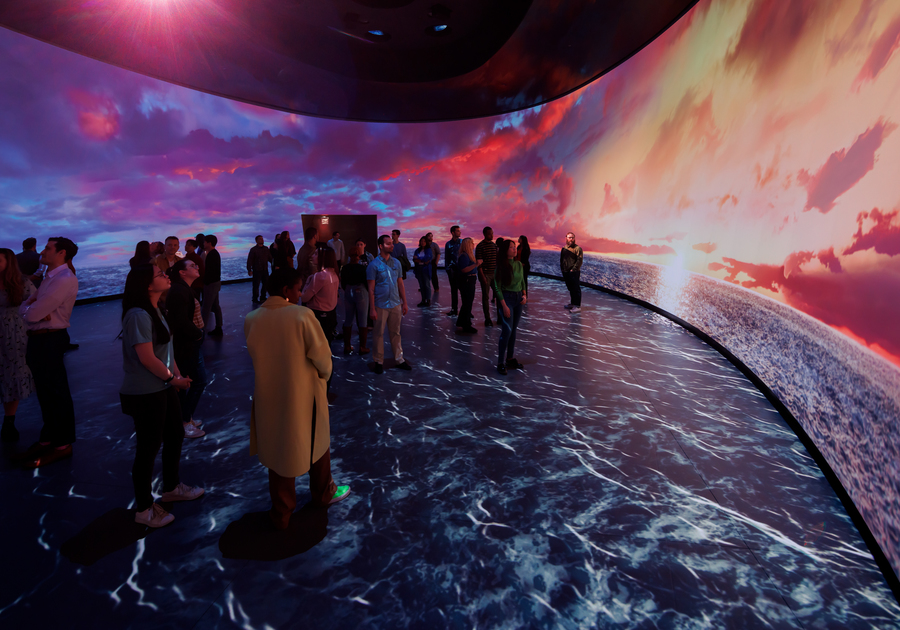Hailed internationally as a soaring architectural achievement, and housing world-class research facilities and scientific collections, next-generation classrooms, and innovative exhibitions, the American Museum of Natural History’s highly anticipated Richard Gilder Center for Science, Education, and Innovation will open to the public on May 4, catapulting the Museum into an exciting new era.
Located along the south side of the Griffin Atrium, the Louis V. Gerstner, Jr. Collections Core establishes the central role of scientific collections as evidence from which knowledge is derived. The five-level facility includes three floors of floor-to-ceiling exhibits that showcase the breadth of the Museum’s collections, revealing to visitors the diversity and importance of scientific collections, the ways in which they are studied, and some of the discoveries they have yielded so far as well as the potential for future discoveries based on new methods and technologies.
Visitors will be able to explore three levels of spectacular displays featuring more than 3,000 objects and representing every area of the Museum’s collections in vertebrate and invertebrate zoology, paleontology, geology, anthropology, and archaeology, with materials ranging from dinosaur tracks to astronomical instruments, and from antlers to pottery. A series of digital exhibits feature stories about how scientists analyze various types of collections and introduce Museum researchers, while the glass-paneled exhibits, including those in the Macaulay Family Foundation Collection Galleries on the first and second floors, offer visitors glimpses into working collections areas situated behind the displays. Together with the collections stored in the new Lepidoptera facility, which is also visible to visitors and is located next to the Collections Core on the second floor, the Gilder Center houses more than 4 million scientific specimens. (See the Louis V. Gerstner, Jr. Collections Core fact sheet for more).
Along the north side of the building, on the Gilder Center’s first floor, visitors will find the 5,000-square-foot Susan and Peter J. Solomon Family Insectarium, dedicated to the most diverse group of animals on Earth and to highlighting their critically important role on our planet. Featuring 18 species of live insects, digital exhibits, models, and pinned specimens, the Insectarium introduces visitors to many of the 30 orders of insects and explores the vital functions that insects perform in different ecosystems, their evolution, and how insects benefit our species—and even inspire architects and roboticists. Oversized models of honeybees mounted overhead draw visitors through the gallery toward a monumental 8,000-lb resin model of a beehive at the west end. Along the way, visitors encounter exhibits where they can “meet the insects” by closely examining pinned specimens, living insects, and scientific visualizations and pass under a transparent skybridge built as a route for scurrying leafcutter ants in one of the world’s largest live leafcutter ant displays. Touch screens provide ways to learn more about insects in various ecosystems in each borough of New York City, and a sound gallery envelops visitors with the “music” of Central Park’s insects and their vibrations. (See Susan and Peter J. Solomon Family Insectarium fact sheet for more.)
Directly above the Solomon Family Insectarium, on the second floor, visitors can continue their exploration of live insects when they enter the year-round, 2,500-square-foot Davis Family Butterfly Vivarium to mingle with up to 1,000 free-flying butterflies in various micro-environments along a meandering route. Featuring butterflies of up to 80 species—which visitors can identify by referring to an identification board featuring an illustrated card for each species in flight—the Vivarium offers opportunities for close observation of one of nature’s vital environmental barometers as well as a view into the pupae incubator, where visitors can learn about the butterfly life cycle and observe chrysalises, perhaps even seeing a butterfly emerge. With the assistance of staff, visitors can also view butterflies through a digital microscope. (See the Davis Family Butterfly Vivarium fact sheet for more.)
On the third floor of the Gilder Center is Invisible Worlds, an extraordinary 360-degree immersive science-and-art experience that represents the next generation in scientific visualization. The experience begins in the Susan S. and Kenneth L. Wallach Gallery, which highlights the ways in which all life is connected—through segments of our DNA, within our ecosystems, through food webs, and through communication at the cellular level and beyond—and then draws visitors into a custom-designed oval space for the immersive experience. Building on the Museum’s long tradition of transporting visitors across the world via its iconic habitat dioramas and throughout the universe in the Hayden Planetarium, Invisible Worlds surrounds visitors with projections to present a breathtakingly beautiful, imaginative, and scientifically rigorous view into networks of life at all scales.
DINING AND RETAIL IN THE GILDER CENTER
The Restaurant at Gilder, located on the second floor, will offer table-service dining with a view overlooking the Griffin Atrium. Featuring contemporary American cuisine with regional and global influences, the restaurant will offer beverages that highlight local breweries and vineyards.
In addition, two shops in the Gilder Center, located on the first and third floors, will offer a range of engaging products to complement Museum exhibitions and experiences.
For More Information
For more information about the Gilder Center, becoming a Member of the Museum, or purchasing tickets, please visit amnh.org/GilderCenter.






